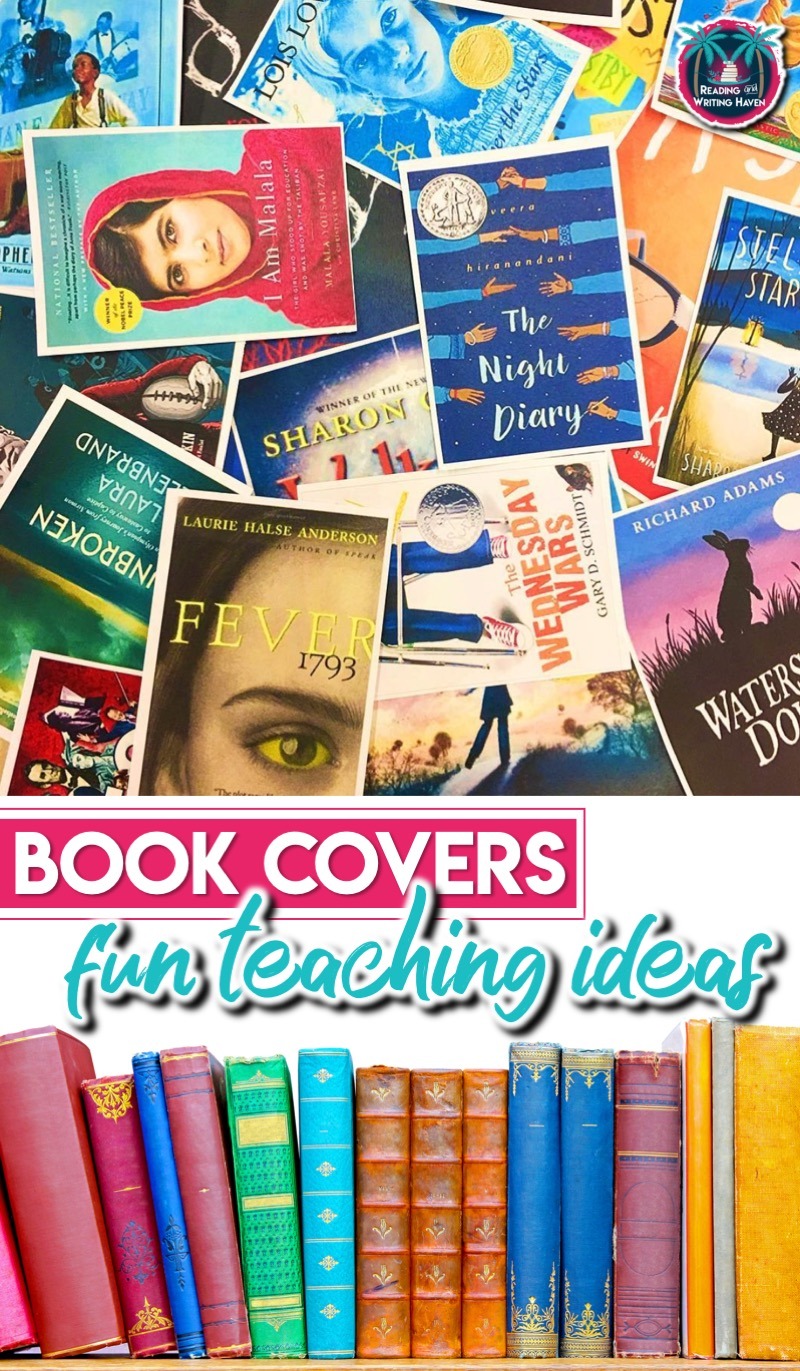Fun Book Cover Lessons
Book cover lessons? If they aren’t a thing, they should be. If books were ever cool, the time is now. Classroom libraries are taking the world by storm, teachers are reading aloud to students in all grade levels, choice reading is trending, and bookish decor and humor reigns on social media.
As the old expression goes, “Don’t judge a book by its cover.” Yet, one of the most important aspects of a book is, in fact, its cover. Book covers can be major selling points for developing readers. I once worked with a librarian who ordered new books she’d never heard of based solely on the cover image. While this scenario is a little extreme, it proves a point. Book covers are powerful. So, how can we use them in the classroom?
Let’s take a look at some fun lesson plans that incorporate book covers as suggested by some of our teacher friends on Instagram.
1. Genre Sort
Have students sort through book covers to determine, based on the clues available, what genre the book might fit in best. After students make their initial inferences and justify them with evidence from the visual, have them verify their answers through research. Then, they can use the book covers to create genre posters or mind maps to hang in the room. @mrs.little.teaches.middles
2. Question Generation
Have students generate questions based on the cover. Book covers are an excellent platform for teaching students to ask thin and thick questions. For example, What colors does the book cover use most? And, What might these colors symbolize? @mrseduc8te
3. Cover Comparison
Some books, especially many of the classics, have multiple cover versions. It can be engaging for students to make some observations about the differences and similarities between them. Following, they can research why book covers change. To wrap up, students can discuss why the cover might have changed and evaluate which version is best. @coffee.chaos.kindness
4. I Spy
Playing I Spy helps students in a literal sense and allows them to make inferences and predictions prior to reading. Want to take it a step further? Ask students to make text-to-text connections to pique their interest and increase the likelihood that they will want to jump in and start reading. @sally.spencerteach
5. Cover Redesign
Use book covers as tools to discuss symbolism and mood. Ask students questions like this: What might ___ symbolize? What do you think is the importance of ____? Why might the cover be like ____ instead of like ____? What clues can you find that might help us to figure out what this book is about? Then, have students redesign a cover for the novel after they read it and justify their design decisions. @aj.oppen
6. Artwork Analysis
Book covers are art. Why not use them as such? Have students analyze the cover art of a book as if it were text. In addition to considering the colors and symbols, students can analyze the artistic style. For example, is it realism or abstract? Then, they can evaluate whether the cover style matches the author’s writing style. @no.sleep.til.summer
7. Elevator Images
Like an elevator talk, book covers can be used to elevate the popularity of a book. Hang them around the room with speech bubbles that say things like, “Ask Randy about this book!” Or, when students finish reading a book, ask them to write an essential question that corresponds with it, and post that question next to the book cover. @rileyreadsya
8. Guess the Title
Cover up the titles on the book covers and have students guess them based off of the images and book blurb. Then, ask students to explain why they chose that title. @wonderingwithmrswatto
9. I Notice, I Wonder
Partners or small groups can create “I Notice” and “I Wonder” charts over the covers of their choice. Then, students can find groups of novels with similar themes. @tammiblevens
10. Point of View
Have students predict the book’s point of view based on the cover. Then, share an excerpt of the book with students and let them update their point of view inference. Students could then create their own excerpt of a story, focusing on point of view, and make a matching book cover. @wonderingwithmrswatto
Tie this strategy to the standards by having students analyze how the point of view creates effects such as suspense or humor (and how those effects are represented by the cover image). Consider: Winger, Does My Head Look Big in This?, and One of Us is Lying.
11. Book to Movie Comparison
Common Core standards require students to analyze the extent to which a filmed or live production of a story or drama stays faithful to or departs from the text or script, evaluating the choices made by the director or actors. Teachers can scaffold this process by beginning with covers of books and their movie counterparts. Take the text Wonder, for instance. What is different? What is the same? Why?
12. Allusion Awareness
Teachers can use book covers to help students analyze how a modern work of fiction draws on Shakespearean or mythological works. For example, this list of books based on Shakespeare’s works would be fun. After reading one or more of Shakespeare’s plays, students could study these book covers to identify common themes between adaptations of and allusions to the Bard’s original works. And, here is a list of mythology-inspired young adult works.
Book covers can be an effective way to hook students. Since students tend to love visuals, using the aesthetic packaging of novels is a creative way to pull in readers. Use them to refresh lessons, increase readership, and encourage critical thinking.
BOOK COVER ACTIVITY
Engage students with this fun book cover activity that incorporates discussion: observation, analysis, and evaluation. Plus, students will learn about elements of effective book covers, redesign covers to make them more effective, and write an informative essay about book cover marketing approaches.


